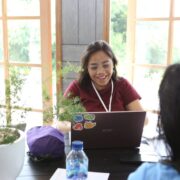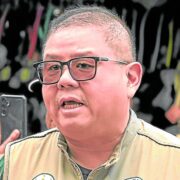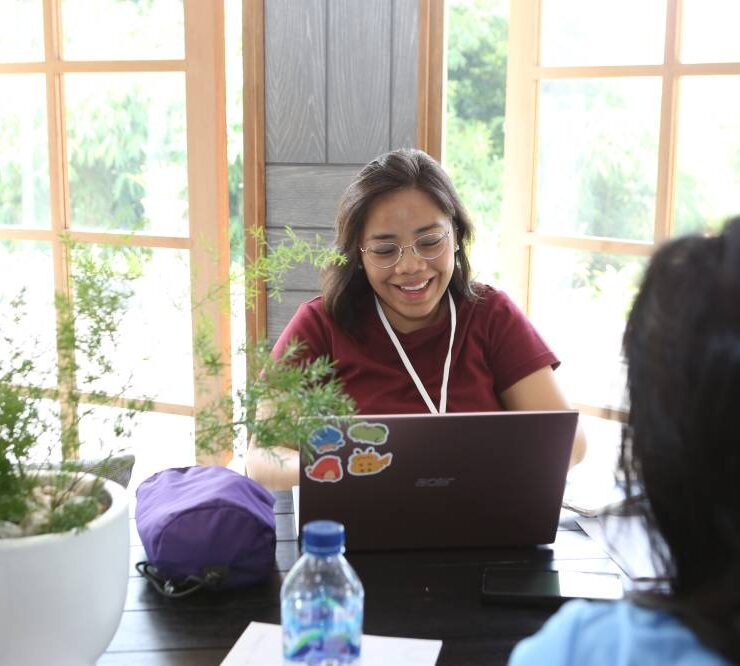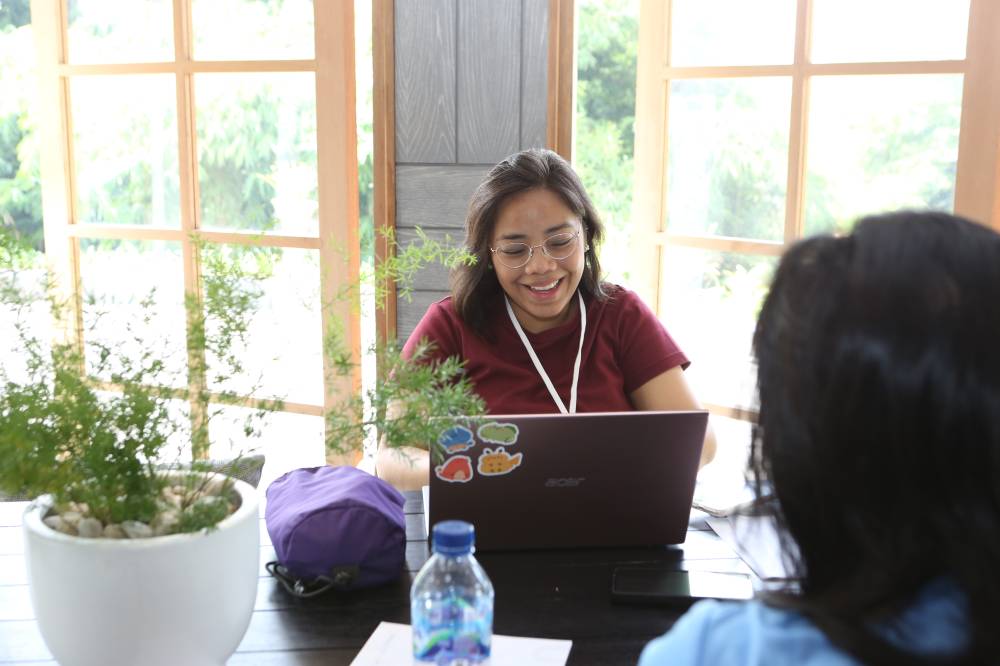‘Reporter ako’: A decade of preserving memory





‘Reporter ako’: A decade of preserving memory
‘Reporter ako’: A decade of preserving memory
‘Reporter ako’: A decade of preserving memory
Twelve years ago, I was hauling old boxes in the middle of a dark, dusty garage, then digging inside them to find hundreds of affidavits belonging to the victims of martial law. I was a 24-year-old reporter, and it was my first year on the job. With a few of my editors and some interns, we scanned each document that had been stored in the home of one of the lawyers of these victims of human rights violations. These affidavits had been locked away for years, and we knew that we had to preserve history before these papers crumbled and were forgotten.
I had learned about the Marcos dictatorship in school, of course. It was a time when our Araling Panlipunan teachers would still ask us if anyone had been born by 1986, and those who raised their hands were deemed special. We watched the “Batas Militar” documentary and my grade school mind latched onto the form of torture where the military would tear their victims’ nails out from their fingers.
Going through the actual affidavits taught me many other forms of torment that were inflicted on the victims of the dictatorship: being made to brush one’s teeth with rose thorns; dragged through the mud where carabaos bathed with one’s neck tied with the same rope used on the beasts of burden; or ordered to climb a fruit tree someone had just been harvesting from before they were shot dead.
These people were farmers, fisherfolk, carpenters, factory workers, businesspersons, nuns, housewives, teachers and students. They were from all over the country, speaking and eventually writing in their own regional languages. They had been left crippled, sickly or traumatized by the abuse they’d suffered. And if they had been one of the many who were summarily executed, their families were left wondering how justice could be served.
We brought the copies of these affidavits around schools so that students could “meet” the victims and record their testimonies. It had become our mission to make people #NeverForget. Aside from this interactive activity, we also interviewed martial law survivors and published their accounts on our news site, as well as recorded live performances of living musicians of that time singing protest anthems from that era.
People Power
Four years later, our team embarked on another special project of remembrance. It was the 30th anniversary of the Edsa People Power Revolution, and as though it was happening in real time, we live-tweeted the events just as they unfolded in 1986. History had never felt more alive to me than when we were talking to our Twitter followers and keeping each other abreast of the developments as Feb. 25 neared.
I was a digital-first reporter, and it was exciting for me to figure out how to use the newest platforms to tell stories. As our newsroom closed, I cofounded a podcast production company and dove headfirst into everything that went into creating audio narratives rooted in journalism.
I honed my skills in interviewing so that my guests could weave pictures with words. I learned how to capture ambient sound. I tried my hand at cutting and putting audio, sound effects and music together using free software. I figured out how to write scripts so they sounded natural and not, well, scripted. I also became proficient in directing hosts who were just as new at podcasting as I was.
Our team continued to commemorate what had gone before. We listened to mothers and wives talk about how their sons and husbands had been murdered by masked, motorcycle-riding men. They recalled where exactly on their loved ones’ bodies the bullets had pierced through, and how the victims had pleaded before they were gunned down. And just like the families of the martial law victims who had written their loved ones’ affidavits for them, they wondered why this had happened to them.
‘Tokhang’
Documenting the tales of “tokhang” included sitting in on an interview between a newspaper columnist I admired, Randy David, and his brother, now Cardinal Ambo David, as the two talked about the Christian view of redemption, the drug war, and former President Rodrigo Duterte.
“[Duterte] is also a child of God?!” the older brother exclaimed, his disbelief reverberating through that tiny recording studio.
And the reply of then Bishop Ambo, whose Caloocan diocese had turned into a killing field during Duterte’s anti-illegal drugs campaign, was simply, “Yes.”

With the Philippine Daily Inquirer, we embarked on our first true-crime podcast. We wanted this to be narrative-style, and with the Inquirer’s library of newspapers spanning decades, as well as its current and former reporters and editors who had covered modern Philippine history as it unraveled, we were able to create two seasons. The first was “Super Evil: Hatched in Hell,” which was about the murder of one college student and the rape-slay of another in the 1990s, with a mayor as the mastermind.
Before the pandemic lockdown, we visited the Laguna town where the crimes had taken place, and walked down a dirt path to where one of the victims’ bodies was found. We also talked to a few residents who still believed in the mayor’s innocence. We interviewed the lawyer of the family of one of the victims, victims as well .
“In the courtroom, the mayor would whisper to me and ask what color I wanted my coffin to be,” recalled the lawyer. More than 20 years after the entire affair, the lawyer was finally able to laugh it off. “That’s how fierce he was.”
Political patronage
We also talked to a governance expert who explained why the same mayor’s family members continued to get elected into power term after term: political patronage. Vote for me and I will help you. And if I help you, you owe me a debt of gratitude, so you must continue to vote for me. As long as there was inequality in society, there would always be those who had none and would seek help from those in power. Whether or not these people were worthy of being in that position was the question .
Our second season, “Super Evil: Such a Beautiful Place to Die,” was also deeply political. In 2009, when the convoy of the Mangudadatus and the reporters who had accompanied them to file Esmael “Toto” Mangudadatu’s certificate of candidacy was intercepted by the Ampatuans and their private army, the victims were led to a hilly spot where they were executed, then buried in shallow graves with a backhoe.

“A beautiful place to die,” a journalist who had gone to the massacre site remarked.
Though we did not have the budget to fly to Maguindanao and see it for ourselves, we were able to talk to one of the journalists who was part of the investigating team that had responded within hours of the incident.
“Is it obvious that it left an emotional toll on me?” she asked in between sniffles. “It’s been 10 years and I still cry about it. ”
She went to wake after wake to find out who the victims were, which news agencies they had come from, and whether there were children that they needed to find support for so that the kids could continue schooling. There were spouses who had no idea how dangerous their partners’ work had been, and they needed to be consoled as well.
“That was the year when there was no Christmas,” the journalist told us in the recording studio.
Closing that chapter
After five years, I closed that chapter in my journalism career and spent a few months figuring out what else I wanted to do with my life. It had been a fast-paced decade, with coverages of typhoons where my story count would be 12 at the end of the day; “pinatapon lang doon” (shipped off to an unfamiliar beat) assignments where I tried to figure out which words to use for the clothes on display during Philippine Fashion Week; a trip to Benham Rise which found me lying on the floor, seasick, by day two, and on the same night, lying on the deck of the ship, watching the moonless sky and imagining the creatures that swam in the waters around us.

Many YouTube videos had been consumed over that career break. This number was directly proportional to the amount of naps I took with my dog on the couch. I had time to watch the birds flit through the huge tree in our neighbor’s yard and study the way the light dappled the leaves.
I tried doing work with a few nongovernmental organizations, one on building climate resilience among marginalized communities, and another on monitoring the peace process in the Bangsamoro. But it was the third one, a Canadian media development organization, that really felt like home.
Human rights defenders
When the Journalists for Human Rights (JHR) team arrived in Manila in November last year, I arranged meetings in cafés and restaurants with human rights defenders and members of mainstream media and the alternative press. They were aghast at the imprisonment of young community journalist Frenchie Mae Cumpio on charges of illegal possession of firearms and explosives.
They were baffled by the practice of Red-tagging, where journalists critical of the government were branded as aligned with Communist rebels, placing them in danger of surveillance, harassment and even death. And they were in awe at how their Filipino colleagues continued to do their jobs despite the challenges they faced.
Throughout these conversations we realized that everyone should have been mic-ed up. And by the time JHR had flown back to Canada, we were determined to create a podcast.
Almost a year later, with veteran broadcast journalist Lisa LaFlamme recording in Toronto and myself doing interviews in Manila, with the guidance of JHR executive director Bill Killorn and programs manager Mujtaba Haris, and with the help of my coproducer and audio editor Nina Torralba, we have launched the Journalists for Human Rights Podcast, and its first season centers on the Philippines.
And here, I find myself still in the business of preserving memory. But this time, it’s of the people who themselves are in the same business, and have been for decades before me.
Such as my mentor and former managing editor Lourdes Fernandez, who had been part of the mosquito press and continues to lead a newsroom during the time of Marcos Jr .
I asked, “What keeps you going?”
She replied, “Many years ago, I was in Mexico talking with one of the officers of the Mexican chapter of the International Organization of Journalists. She was kind of old already, but she was driving a car and bringing us around. At that time, there were a lot of journalist killings by the drug cartels in Latin America.
She said, ‘How would you know when it’s time to retire?’ And then I said, ‘Well, when the day comes when there’s news and then I don’t jump up anymore.’ And then she said, ‘Yeah, me too.’
All of a sudden, we saw the tabloids on the street saying, ‘Princess Diana has died.’ She applied the brakes so hard. Her tiny car screeched to a crazy halt. She said, ‘Wait, wait!’ And then we ran out of the car to buy the newspaper.”
























